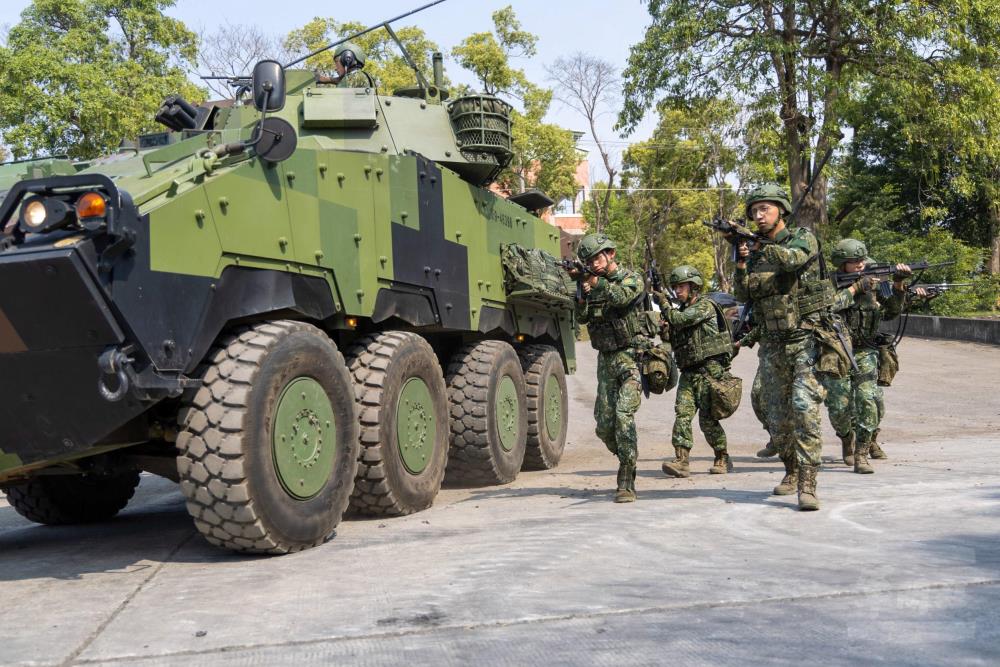
To verify the immediate combat capabilities of troops, the 2nd Joint Battalion of the 586th Armored Brigade took a combat readiness test today. The test is completed with respect to operation items such as orders received at various stages, inspection of combat readiness, and mobile loading and situation handling, which are implemented to practice the protection of important targets and enemy troops. The combat drills feature with actual troops, equipment, and ammunition combined with simulation scenarios to verify cadres' capabilities to understand commands and engage in direct operations as well as contingent responses by troops to changes.
The combat readiness test was first implemented to check the order transmission of combat readiness and combat readiness inspection. Once the command post receives orders, all officers and soldiers should quickly enter tactical positions. After vehicles and equipment are checked and confirmed that they are in good condition, ammunition is loaded into the armored vehicles in sequence to quickly complete maneuver preparation. Based on scenario-based drills for combat casualty rescue and other subjects, officers and soldiers skillfully and proficiently completed various stages of tactical actions with great fighting spirit, fully demonstrating the results of their day-by-day diligent training.
Captain Ma of the company command said that officers and soldiers can become familiar with wartime duties and various contingency actions through quarterly combat readiness tests and real-life drills, and such drills strengthening the contingent ability of troops to adapt to changes, and maximize the operational effectiveness of units.
Sergeant Chang, the medical officer, pointed out that the incorporation of combat injury care into the combat readiness test helps improve self-rescue capabilities on the battlefield, so that all service personnel have the skills to use emergency rescue equipment such as tourniquets to provide preliminary combat injury treatment immediately after a soldier is wounded to improve the survival rate.